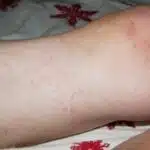As a laundry and fabric care expert, I understand the importance of maintaining your clothing in pristine condition. White clothing, in particular, can be challenging to maintain as it tends to yellow or become stained over time. However, with the right techniques and products, you can bleach your clothing white and restore their original brightness.
Bleaching is a process that involves removing color from fabrics to make them appear whiter. It is essential to use the correct bleaching agent and follow the proper procedures to avoid damaging your clothes. In this article, we will discuss how to bleach clothing white effectively. We will cover the different types of bleach available in the market, safety precautions, and step-by-step instructions on how to bleach your clothes safely and efficiently. By following these guidelines, you can ensure that your white clothes remain bright and vibrant for longer.
Understanding The Science Of Bleaching
As a laundry and fabric care expert, it is essential to understand the chemistry behind bleaching. Bleaching agents work by breaking down the chromophores, which are responsible for the color in clothing. Sodium hypochlorite, hydrogen peroxide, and sodium percarbonate are common bleaching agents used in laundry.
One common misconception about bleaching is that it can remove all stains. However, bleach works best on organic stains such as coffee or wine. For protein-based stains like blood or sweat, bleach may not be effective and could even set the stain further into the fabric. It is crucial to assess the type of stain before applying bleach.
Another misconception is that bleach can be used on all fabrics without any consequences. However, this is not true as some fabrics may be sensitive to bleach and could become discolored or damaged when exposed to it. Therefore, it’s important to check your clothing’s label for any specific care instructions before proceeding with bleaching.
Understanding the science behind bleaching and debunking common misconceptions can help ensure successful results when attempting to whiten clothes through this process. Before beginning a bleaching procedure, it’s crucial to assess your clothing’s fabric type to determine whether it can withstand the process or not.
Assessing Your Clothing’s Fabric Type
Fabric types can be divided into natural and synthetic fibers, and it is important to assess the fabric type before attempting to bleach clothing white. Natural fibers such as cotton, linen, and wool can be treated with bleaching agents, while synthetic fibers such as polyester, nylon and spandex may not be colorfast, meaning the bleaching will cause discoloration. It is also important to perform a colorfastness test prior to bleaching in order to determine the fabric’s sensitivity to the bleaching agent.
Fabric Types
Assessing Your Clothing’s Fabric Type is crucial to determine the appropriate way of bleaching clothes. Different fabric types require varying levels of care, and using the wrong method can ruin your clothing. For delicate fabrics such as silk, wool, and rayon, it is best to avoid using bleach altogether. These fabrics are prone to damage when exposed to harsh chemicals, so it’s essential to use gentle detergents that do not contain bleach.
On the other hand, synthetic fabrics like polyester and nylon can withstand bleaching but require a different approach. Bleaching delicate synthetic fabrics must be done with caution since they can easily melt or discolor when exposed to high temperatures or strong chemicals. When dealing with this type of fabric, always read the garment care label first before starting any bleaching process. It is also important to use a bleach specifically designed for synthetic materials.
In conclusion, knowing your fabric type is crucial in determining the appropriate way of bleaching clothes. Bleaching delicate fabrics like silk and wool should be avoided while bleaching synthetic fabrics requires a different approach altogether. Always check the garment care label before starting any bleaching process and use only bleach products specifically designed for your fabric type for optimal results.
Natural Fibers
Assessing your clothing’s fabric type is an essential aspect of determining the appropriate way of bleaching clothes. Different fabric types have varying levels of care requirements, and using the wrong method can ruin your clothing. In this regard, natural fibers are one significant category that requires careful attention when it comes to bleaching. Natural fibers include cotton, linen, hemp, and wool.
Bleaching natural fibers requires different bleaching agents depending on the specific fabric. For example, cotton and linen are relatively easy to bleach using chlorine bleach or hydrogen peroxide bleach solutions. However, wool is more delicate and requires a gentler approach such as using oxygen-based bleach or white vinegar to prevent damage or discoloration. It is crucial to read the garment care label first before starting any bleaching process for natural fiber fabrics.
In contrast to synthetic fibers like polyester and nylon, natural fibers tend to be more absorbent and breathable. This feature makes them more prone to staining than synthetic materials but also allows them to hold dyes well. When bleaching natural fiber fabrics, it’s essential not to overdo it since they can weaken over time with excessive exposure to bleach. Therefore, it’s best to use a small amount of bleach solution and rinse thoroughly with water until all traces of bleach have been removed from the fabric.
Choosing The Right Bleaching Agent
Assessing the fabric type of your clothing is crucial before attempting to bleach them white. Choosing the right bleach is equally important as it can make or break the bleaching process. When selecting a bleach, consider if it’s appropriate for the fabric type and color of your clothing.
Chlorine bleach is a common household item used in whitening clothes. However, it should only be used on white cotton fabrics as it can weaken and damage other types of fabrics. Oxygen-based bleaches like hydrogen peroxide are safer alternatives that work well on colored fabrics without causing damage. Remember to never mix chlorine bleach with any other cleaning agents as this can create harmful fumes.
When bleaching clothing, common mistakes to avoid include using too much bleach, not diluting the bleach properly, and leaving the clothes in the solution for too long. Using excessive amounts of bleach can weaken the fabric fibers and cause discoloration. Always follow instructions on how much bleach to use and dilute it properly with water before adding clothes. Leaving clothes in the solution for an extended period can also lead to damage and discoloration.
Preparing your clothing for the bleaching process involves removing any stains or dirt that may interfere with achieving a uniform white color. Pre-treat stains before washing by using a stain remover product or soaking in warm water mixed with laundry detergent. Additionally, ensure that all zippers are closed, buttons fastened, and pockets emptied to prevent uneven bleaching results. By taking these necessary steps, you’ll be able to achieve optimal results when bleaching your clothing white.
Preparing Your Clothing For The Bleaching Process
- Before bleaching any clothing, it is important to check for colorfastness to avoid damage to the fabric.
- Different fabrics will require different bleach solutions, so be sure to choose the bleach that is appropriate for the fabric in question.
- For best results, always read the care labels on the clothing and the instructions on the bleach bottle before starting the bleaching process.
- Pre-treating the fabric with detergent and hot water prior to bleaching can provide a more effective and thorough result.
Checking For Colorfastness
Before bleaching your clothing, it is important to check for colorfastness. This step will determine whether or not the fabric can withstand the bleaching process without fading or bleeding. As a laundry and fabric care expert, I highly recommend testing the fabric with a pre-bleaching treatment before proceeding with the actual process.
To test for colorfastness, apply a small amount of the pre-bleaching treatment onto an inconspicuous area of the garment, such as inside seams or hemlines. Allow it to sit for five minutes before rinsing it off with water. If there are no noticeable changes in color or texture, then you can proceed with bleaching the clothing. However, if there are any signs of discoloration or damage, do not continue with the process as this can lead to irreversible damage.
Taking the time to test for colorfastness may seem like an extra step, but it is crucial in ensuring that your clothing comes out looking its best after being bleached. By following these steps and using a pre-bleaching treatment, you can avoid ruining your favorite garments and keep them looking fresh and white for many wears to come.
Choosing A Bleach Solution
After successfully testing for colorfastness, the next crucial step in preparing your clothing for the bleaching process is choosing the right bleach solution. It is important to note that not all bleaches are created equal, and selecting the wrong concentration can result in irreversible damage to your garments. As a laundry and fabric care expert, I highly recommend using a bleach solution with a concentration of 5-6% sodium hypochlorite for maximum effectiveness.
Before proceeding with the bleaching process, it is important to dilute the bleach solution properly. The ideal ratio is one cup of bleach per gallon of water. This will ensure that the bleach does not become too concentrated and cause damage to your clothing. Additionally, it is important to always wear gloves and protective eyewear when handling bleach to avoid any accidental contact with skin or eyes.
In summary, choosing the right bleach solution and diluting it properly are essential steps in preparing your clothing for the bleaching process. By using a bleach solution with a concentration of 5-6% sodium hypochlorite and diluting it at a ratio of one cup per gallon of water, you can effectively remove stains and brighten whites without causing damage to your garments. Remember to always prioritize safety by wearing gloves and protective eyewear when handling bleach.
Selecting The Right Bleaching Method
When it comes to bleaching clothing, there are different types of bleaching agents and methods to choose from. The most common types of bleaching agents are chlorine bleach, hydrogen peroxide, and oxygen bleach. Each type has its unique properties that make them suitable for specific fabrics or stains.
Chlorine bleach is a powerful agent that can remove tough stains and whiten clothes quickly. However, it can damage certain fabrics like wool, silk, and spandex. Moreover, it can cause discoloration on colored fabrics. Hydrogen peroxide is another effective bleaching agent that is gentle on fabric fibers. It works best on white cotton and linen clothes but may not be as effective in removing stubborn stains. Oxygen bleach is a non-toxic alternative to chlorine bleach that is safe for most fabrics and colors. It takes longer to whiten clothes but does not produce harsh fumes or leave residues.
Before selecting a bleaching method, consider the pros and cons of each option based on your fabric type and stain severity. Chlorine bleach is excellent for whites but can ruin colored garments or delicate fabrics. Hydrogen peroxide offers a gentler approach but may require more time to see results. Oxygen bleach is safe for most fabrics but requires patience as it works gradually over time. Ultimately, the goal should be to achieve optimal results without harming the fabric’s integrity.
Understanding the risks and safety precautions involved in the bleaching process is crucial before proceeding with any method. Next, we will explore essential considerations when handling bleach to ensure proper usage without causing harm to yourself or your garments.
Understanding The Risks And Safety Precautions
Now that you have selected the right bleaching method for your clothes, it is essential to understand the risks involved and take necessary safety precautions. Bleach can be hazardous if not handled carefully. Therefore, it is crucial to ensure proper ventilation in the room before starting the bleaching process.
Ventilation plays a critical role in preventing exposure to bleach fumes, which can cause respiratory problems, especially for people with asthma or other respiratory illnesses. Ensure that windows and doors are open to allow fresh air into space. In case of inadequate ventilation, consider using a fan or wearing a mask to avoid inhaling bleach fumes.
Wearing protective gear during the bleaching process is also vital. It would be best if you wore gloves and an apron to protect your skin from direct contact with bleach. Additionally, consider wearing goggles to protect your eyes from splashes of bleach solution. Taking these safety measures will reduce the risk of chemical burns or irritation on your skin or eyes. Understanding these safety precautions will make your bleaching process safe and effective while keeping you healthy and free from any hazards.
Transition: Now that we have discussed safety precautions when using bleach, let’s dive into how you can use a washing machine to bleach white clothing effectively.
How To Bleach White Clothing In A Washing Machine
Bleaching white clothing in a washing machine is a quick and effective way to brighten up faded or stained items. Using bleach alternatives such as hydrogen peroxide, vinegar, or baking soda can also produce similar results without the harsh chemicals. However, it is important to read the care label on your clothing before bleaching to ensure that it is safe to do so.
To begin, sort your white clothing by fabric type and color-fastness. Separate delicate fabrics from strong ones and ensure that all items are colorfast. Add detergent to the washing machine as usual and pour in the appropriate amount of bleach according to the product label. Run a normal cycle using hot water for best results.
If you prefer not to use bleach or have sensitive skin, you can hand wash your white clothing instead. Fill a basin with cold water and add a gentle laundry detergent or stain remover. Soak your clothes for at least 30 minutes before gently rubbing the fabric together with your hands. Rinse thoroughly and hang dry in direct sunlight if possible for additional brightening effects.
How To Bleach White Clothing By Hand
After learning how to bleach white clothing in a washing machine, it is important to also know how to bleach white clothing by hand. Hand washing clothes requires more attention and care, but it can be more effective for tough stains and delicate fabrics. Here are some tips on how to bleach white clothing by hand.
Firstly, always read the label on your clothing before bleaching. Some fabrics cannot withstand the strong chemicals in bleach and may become damaged or discolored. It is also important to wear gloves when handling bleach to protect your skin. Additionally, only use bleach in a well-ventilated area as the fumes can be harmful if inhaled.
Secondly, fill a large container with water and add the appropriate amount of bleach according to the instructions on the packaging. Mix the solution well before adding your white clothing items. Remember not to overload the container as this will prevent proper distribution of the bleach solution.
Lastly, let your clothes soak in the solution for at least 30 minutes before rinsing thoroughly with clean water. Repeat this process if necessary until you achieve your desired level of whiteness. Hang dry your clothes in direct sunlight for added brightening and disinfecting power.
Hand washing tips:
- Read labels carefully before bleaching
- Wear gloves and work in a well-ventilated area
- Use an appropriate amount of bleach for each item
- Soak clothes for at least 30 minutes
Precautions to take:
- Do not overload container with clothes
- Rinse thoroughly after soaking
- Hang dry clothes in direct sunlight for added brightening and disinfecting power
Now that you know how to effectively bleach white clothing by hand, it’s important to also learn how to safely bleach colored clothing without causing damage or color loss.
How To Bleach Colored Clothing Safely
As a laundry and fabric care expert, it is important to know how to bleach colored clothing safely. Bleaching can be a tricky process as it involves removing color from clothes without damaging the fabric or causing discoloration. If you are not careful, you can end up with white patches on your colored clothes or even worse, holes in your fabrics.
But fear not! There are ways to bleach colored clothing safely. One way is to use natural bleach. Natural bleach is an eco-friendly alternative to chemical bleaches that can contain harsh toxins that may harm the environment and your health. Some examples of natural bleach include lemon juice, vinegar, and baking soda. Not only are they gentle on your clothes and skin, but they also have antibacterial properties that help remove stains and odors.
Another tip for preventing color bleeding during bleaching is to separate your whites from your colors before washing them. This will prevent any accidental color transfer between garments. Additionally, always follow the instructions on the label of the bleaching product you intend to use. Over-bleaching can cause irreversible damage to your clothes.
Now that you know how to bleach colored clothing safely, it’s time to learn how to remove stains before bleaching. Stains can interfere with the effectiveness of the bleach and cause uneven results. But don’t worry; there are several stain removal techniques that you can use depending on the type of stain and fabric involved.
How To Remove Stains Before Bleaching
- Stains should always be addressed prior to bleaching to ensure the most effective results.
- The most successful way to remove stains before bleaching is to soak the clothing in a solution of water and detergent.
- This will loosen the stain and allow the detergent to penetrate deep into the fabric, breaking up the stain molecules.
- It is important to use a detergent specifically designed for washing clothes and to follow the manufacturer’s instructions to ensure the best results.
- After soaking, the clothing should be rinsed in cold water and then washed as usual before bleaching.
- It is important to note that some stains may be impossible to remove completely and may still be visible after bleaching.
Stain Removal
Common stains on clothing can be a frustrating problem for many individuals. Whether it’s coffee, grease, or grass stains, removing them can be a challenge. Fortunately, there are natural remedies that can help to remove these types of stains before bleaching. For example, rubbing alcohol can be effective in removing ink stains, while vinegar and baking soda can work wonders on grease and food stains.
If natural remedies fail to remove the stain, it may be time to consider professional services. While this option may come at a cost, it could save time and hassle in the long run. Before opting for professional services, it’s important to do a cost analysis to determine if the expense is worth it based on the value of the affected garment.
In conclusion, removing common stains before bleaching is an essential part of achieving white clothing. By utilizing natural remedies and considering professional services when necessary, individuals can ensure their garments look their best and last longer.
Soaking
When it comes to removing stains before bleaching, soaking the garment can be an effective method. Soaking involves immersing the stained item in a solution for a prolonged period of time to loosen and remove the stain. The benefits of soaking include its ability to break down tough stains and prevent discoloration or damage that can occur with harsher cleaning methods.
Compared to washing, soaking is a gentler approach that can be especially useful for delicate fabrics or items with stubborn stains. While washing can agitate and further embed the stain, soaking allows the solution to penetrate deeply into the fibers without causing damage. Additionally, soaking allows for more control over the amount of bleach used since it can be added directly to the solution rather than being dispersed throughout a wash cycle.
To soak a garment, fill a basin or sink with cold water and add a gentle detergent along with any additional stain-fighting ingredients such as baking soda or vinegar. Submerge the garment completely and let it soak for at least 30 minutes or overnight for tougher stains. Afterward, rinse thoroughly and repeat if necessary before proceeding to bleach if desired.
Incorporating soaking into your stain removal routine can lead to brighter, cleaner clothes without damaging them in the process. By understanding its benefits and how it differs from washing, you can effectively remove even the toughest stains before bleaching.
Detergent
When it comes to removing stains before bleaching, using detergent can be an effective method. Detergent is a cleaning agent that helps to break down and remove dirt, oil, and other substances from fabrics. It can be especially useful for pre-treating stains before soaking or washing the garment.
To use detergent for stain removal, first identify the type of stain and choose a detergent that is appropriate for the fabric and the stain. For example, enzymatic detergents are effective for protein-based stains like blood or sweat, while oxygen bleach detergents are better suited for removing discoloration caused by wine or coffee. Be sure to follow the manufacturer’s instructions on how much detergent to use based on the size of the load and level of soiling.
When choosing a detergent for bleaching, there are additional factors to consider such as color-fastness and sensitivity to harsh chemicals. Look for a mild detergent that is safe for use on colors and won’t cause fading or damage to delicate fabrics. Avoid using chlorine bleach with certain types of fabrics like silk or wool as it can weaken the fibers and cause discoloration.
By understanding how to use detergent effectively for stain removal and selecting the right product for your needs, you can achieve cleaner, brighter clothes without causing damage. Incorporating these tips into your laundry routine can help extend the life of your garments while keeping them looking their best.
How To Avoid Common Bleaching Mistakes
After properly removing stains, the next step in achieving white clothing is by bleaching. However, it is important to note that there are common mistakes when it comes to bleaching clothes. One common mistake is using too much bleach, which can lead to discoloration and even damage to the fabric. Another mistake is not diluting the bleach properly, resulting in uneven bleaching.
To avoid these common mistakes and achieve effective techniques, it is crucial to follow specific guidelines when bleaching clothes. First, always read and follow the instructions on the label of the bleach product being used. Second, use the appropriate amount of bleach for the amount of clothing being washed. Lastly, dilute the bleach according to instructions before adding it to the wash.
In addition to following these guidelines, it is also important to rinse and neutralize bleached clothing properly. This will help prevent any residual bleach from causing further damage or discoloration. The next section will discuss how to rinse and neutralize bleached clothing effectively for optimal results.
How To Rinse And Neutralize Bleached Clothing
When rinsing bleached clothing, it is important to use cold water to prevent the fibers from breaking down further. To neutralize the bleach, add a neutralizer such as a detergent specifically designed for chlorine bleaches. When using bleach for whitening fabrics, safety precautions such as wearing gloves and eye protection should be taken. Additionally, it is important to spot test the fabric and adjust the amount of bleach, water, detergent, and temperature accordingly to ensure the desired results.
Rinsing
To achieve sparkling white clothing, rinsing is a vital step in the laundry process. Rinsing involves removing residual bleach and other detergents from the fabric. It also helps to neutralize the bleach’s harshness, preventing damage to the fabric’s fibers. The benefits of rinsing cannot be overstated as it ensures that your clothes are not only clean but also safe for use.
One common mistake to avoid when rinsing your clothes is using hot water. Hot water can reactivate any remaining bleach residue, leading to damage and discoloration of your clothes. Instead, rinse in cold water until all traces of bleach are eliminated. Additionally, ensure that you rinse thoroughly and more than once to guarantee that all the bleach has been removed.
In summary, rinsing is a crucial step in neutralizing bleached clothing while ensuring that they remain bright and white. It helps eliminate any residual detergent or bleach from the fabric while neutralizing its harshness. Always make sure to rinse with cold water, avoid using hot water that can cause damage or discoloration, and rinse more than once for best results.
Neutralizing
Now that we have discussed the importance of rinsing when it comes to bleached clothing, let us move on to the next crucial step in the process – neutralizing. Understanding pH levels is essential when it comes to neutralizing your clothes. Bleach is alkaline, and if not neutralized, it can cause damage to fabrics over time. Therefore, effective neutralizing agents are necessary to ensure that your garments remain in excellent condition.
One effective way of neutralizing bleach is by using white vinegar or baking soda. Both substances are acidic and can help balance out the alkaline nature of bleach. To use white vinegar, add a cup of it to your final rinse cycle after washing your clothes with bleach. For baking soda, mix a quarter cup with two liters of cold water and soak your bleached clothing for an hour before rinsing thoroughly.
It’s worth noting that while these methods work well for most fabrics, some materials may require a different approach to achieve optimal results. Consulting a fabric care expert or checking the garment’s care label can help you determine the best course of action. Remember always to handle bleached clothing with care and follow recommended guidelines for optimal results.
Tips For Maintaining The Brightness Of White Clothing
Washing tips and laundry tricks can help to maintain the brightness of white clothing. Firstly, it is advisable to separate white clothes from other colors during washing. This ensures that no dye transfer occurs, which can cause discoloration. Additionally, using a detergent specifically formulated for whites can also help to keep them bright. These detergents contain brightening agents that remove stains and yellowing.
Another tip is to avoid using too much detergent or fabric softener as this can leave residue on clothes, making them look dull and faded. It is also advisable to skip the dryer when possible and hang white clothes outside in the sun to dry naturally. The ultraviolet rays of the sun act as a natural bleach, keeping your whites looking bright and fresh.
Incorporating these washing tips and laundry tricks into your routine can help to maintain the brightness of white clothing for longer periods of time. However, if you find that your whites are still looking dingy after following these steps, there are alternative methods for whitening clothes that you could try.
| Washing Tips | Effectiveness | Cost |
|---|---|---|
| Use White Vinegar | High | Low |
| Baking Soda | Medium | Low |
| Hydrogen Peroxide | High | Medium |
| Lemon Juice | Low-Medium | Low |
Table: Alternative Methods for Whitening Clothes
Alternative Methods For Whitening Clothes
Maintaining the brightness of white clothing is a tedious task, but it’s worth it when done correctly. However, sometimes bleach isn’t the best solution for whitening clothes. Many people are turning to DIY bleach alternatives and natural bleaching agents to avoid harsh chemicals that can damage their clothes and harm the environment.
One of the most popular DIY bleach alternatives is baking soda. Baking soda can be used as a natural laundry booster by adding 1/2 cup to your regular detergent. You can also create a paste with water and baking soda and apply it directly to stains before washing for an extra boost of whitening power. Another option is hydrogen peroxide, which is less harsh than bleach but still effective at removing stains and whitening clothes.
In addition to these DIY options, there are several natural bleaching agents that you may already have in your home. Lemon juice, for example, can be used to whiten clothes by soaking them in a mixture of lemon juice and water for a few hours before washing. Vinegar is another natural option that can be added to your wash cycle or used as a pre-treatment for stains. These alternatives are not only effective at whitening clothes but are also more eco-friendly than traditional bleach products.
Moving forward, let’s explore some frequently asked questions about bleaching clothing white and how best to care for your whites using these alternative methods.
Frequently Asked Questions About Bleaching Clothing White
When it comes to bleaching clothing white, there are common mistakes that people tend to make. One of the most significant errors is using too much bleach, which can damage the fabric and even cause discoloration. It’s essential to follow the instructions on the bleach bottle carefully and measure the correct amount for your load size.
Another common mistake is not diluting the bleach with water before adding it to your laundry. Bleach is a potent chemical that can be harmful if not used correctly. Diluting it with water helps to reduce its strength and prevents damage to your clothes. Additionally, it’s crucial to avoid mixing bleach with other chemicals or detergents, as this can lead to dangerous reactions.
There are several effective techniques for bleaching clothing white. One approach is to add a cup of bleach to your wash cycle if you’re using a washing machine. Alternatively, you can soak your clothes in a mixture of bleach and water for 5-10 minutes before washing them. Remember always to use cold water when bleaching clothes since hot water can damage fabrics.
By following these tips and avoiding common mistakes, you can successfully bleach your clothing white without damaging them. Remember that proper care and attention will help extend the life of your garments while keeping them looking their best!
Conclusion
Bleaching clothes white is a science that requires a basic understanding of the properties of bleach and the fabric type. As a laundry and fabric care expert, I recommend assessing your clothing’s fabric type before choosing the right bleaching agent. This will ensure that you don’t damage delicate fabrics like silk or wool.
When preparing your clothing for the bleaching process, it’s essential to follow the instructions on the bleach label carefully. Selecting the right bleaching method is also crucial to achieving optimal results. For example, some methods require soaking while others involve using a washing machine or hand-washing.
After bleaching your clothing, it’s important to rinse and neutralize them properly to avoid leaving any residue behind. Maintaining bright white clothes requires extra care, such as avoiding exposure to sunlight and washing them separately from colored clothes.
In conclusion, understanding how to bleach clothing white is an essential skill for maintaining bright white clothes. Choosing the right bleach agent, preparing your clothes correctly, selecting the appropriate bleaching method are all crucial factors in achieving optimal results. Remember that maintaining bright white clothes requires extra care but with proper knowledge and attention, anyone can achieve great results! As Benjamin Franklin once said, “An ounce of prevention is worth a pound of cure.” This metaphor perfectly describes how preventive measures like careful fabric assessment and proper preparation can prevent costly mistakes when attempting to bleach clothes white.
Image Credits
- “bleaching” by hans s (featured)




















![How To Wash And Care For White Clothes 20 The only genuine borax soap cleanses hygienically saves the clothes and hands. 20 Mule-Team brand Boraxo white laundry soap [front]](https://green-life.blog/wp-content/uploads/2023/05/YDXLLCovnOjq-150x150.jpg.webp)








